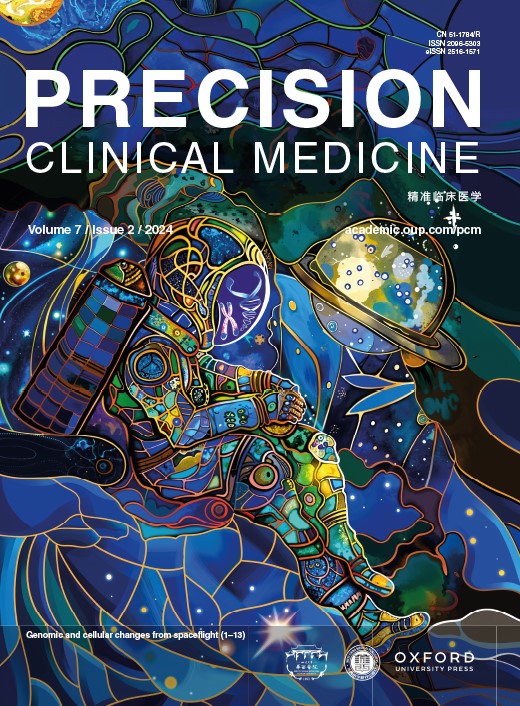中国葡萄膜黑色素瘤GNAQ和GNA11突变谱
IF 5.1
4区 医学
Q1 MEDICINE, RESEARCH & EXPERIMENTAL
引用次数: 3
摘要
葡萄膜黑色素瘤是成人眼内最常见的恶性肿瘤。在白种人GNAQ和GNA11的外显子4和外显子5上发现R183和Q209是突变热点。然而,仅有少数研究报道了中国人葡萄膜黑色素瘤中GNAQ或GNA11的体细胞突变。我们从63个中国葡萄膜黑色素瘤样本的石蜡包埋活检中提取体细胞DNA,并对GNAQ和GNA11外显子4和5的整个编码区进行了测序。结果显示,33%的中国葡萄膜黑色素瘤样本携带Q209突变,而GNAQ和GNA11中没有R183突变。此外,在GNAQ中发现了7个新的错义体细胞突变(Y192C、F194L、P170S、D236N、L232F、V230A和M227I),在GNA11中发现了4个新的错义体细胞突变(R166C、I200T、S225F和V206M)。Q209的高突变频率和本研究检测到的新型错义突变表明,GNAQ和GNA11是中国葡萄膜黑色素瘤体细胞突变的共同靶点。本文章由计算机程序翻译,如有差异,请以英文原文为准。
Mutation spectrum in GNAQ and GNA11 in Chinese uveal melanoma
Abstract Uveal melanoma is the most common intraocular cancer in the adult eye. R183 and Q209 were found to be mutational hotspots in exon 4 and exon 5 of GNAQ and GNA11 in Caucasians. However, only a few studies have reported somatic mutations in GNAQ or GNA11 in uveal melanoma in Chinese. We extracted somatic DNA from paraffin-embedded biopsies of 63 Chinese uveal melanoma samples and sequenced the entire coding regions of exons 4 and 5 in GNAQ and GNA11. The results showed that 33% of Chinese uveal melanoma samples carried Q209 mutations while none had R183 mutation in GNAQ or GNA11. In addition, seven novel missense somatic mutations in GNAQ (Y192C, F194L, P170S, D236N, L232F, V230A, and M227I) and four novel missense somatic mutations in GNA11 (R166C, I200T, S225F, and V206M) were found in our study. The high mutation frequency of Q209 and the novel missense mutations detected in this study suggest that GNAQ and GNA11 are common targets for somatic mutations in Chinese uveal melanoma.
求助全文
通过发布文献求助,成功后即可免费获取论文全文。
去求助
来源期刊

Precision Clinical Medicine
MEDICINE, RESEARCH & EXPERIMENTAL-
CiteScore
10.80
自引率
0.00%
发文量
26
审稿时长
5 weeks
期刊介绍:
Precision Clinical Medicine (PCM) is an international, peer-reviewed, open access journal that provides timely publication of original research articles, case reports, reviews, editorials, and perspectives across the spectrum of precision medicine. The journal's mission is to deliver new theories, methods, and evidence that enhance disease diagnosis, treatment, prevention, and prognosis, thereby establishing a vital communication platform for clinicians and researchers that has the potential to transform medical practice. PCM encompasses all facets of precision medicine, which involves personalized approaches to diagnosis, treatment, and prevention, tailored to individual patients or patient subgroups based on their unique genetic, phenotypic, or psychosocial profiles. The clinical conditions addressed by the journal include a wide range of areas such as cancer, infectious diseases, inherited diseases, complex diseases, and rare diseases.
 求助内容:
求助内容: 应助结果提醒方式:
应助结果提醒方式:


